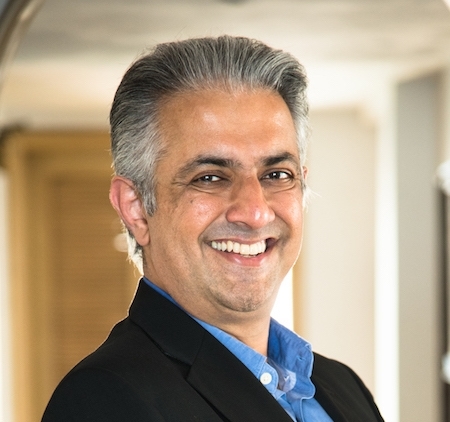One the biggest barriers preventing nonprofits from scaling is their ability to raise enough money consistently to sustain (and expand) operations while fulfilling their mission. This, combined with the ever-tightening laws around compliance, governance, and FCRA, means that many nonprofits are barely surviving.
This was the case two years ago at UnLtd India as well. UnLtd is an incubator that supports early-stage social enterprises through one-on-one coaching, access to mentors and funders, and peer learning.
First, some history
When UnLTD was founded 14 years ago by Pooja Warier and Richard Alderson, I got to know them through my pro bono mentoring work with entrepreneurs across sectors. They asked me to be on their board, which I accepted. As a result, I’ve been part of UnLtd ever since its inception and have seen it through all its transitions—when both the co-founders stepped down, when Anshu Bhartia took over as the new CEO in 2017, and when SAGE Foundation took over its operations and brand in 2023.
I had always been passionate about UnLtd and had many ideas with respect to its model, growth, and expansion. As a board member, I’d also observed that UnLtd’s work (as is the case with most nonprofits) was constrained by the amount of funding the organisation could generate, because it was still a small, entry-level incubator.
Registered as the Social Entrepreneurs Foundation of India (SEFI), a Section 8 company with an FCRA license, much of UnLtd’s funding over the years came from international grants.
The situation in 2021
Two major challenges arose in 2021. The first stemmed from changes in the FCRA law, which resulted in a lengthier renewal process and a higher rate of rejection. SEFI was due to reapply, but given the uncertainty around whether the license would get renewed, we could not access funds from our many international donors.
The second challenge was the COVID-19 pandemic. Keeping operations afloat during this time was tough, especially with funding drying up. Although SEFI had applied for an FCRA renewal, there was no visibility into when it would receive the approval, if at all. Since the organisation was supporting start-ups led by social entrepreneurs, its work didn’t fall into neat categories such as education, healthcare, skilling, or livelihoods. Given the effort it took to even establish that SEFI could be classified as a charitable organisation, there was no guarantee that the renewal would eventually come through. Around this time, the CEO Anshu Bhartia also expressed her desire to step down.
As a result, we were left with three options:
- Closing down operations, which did not make sense given the value of the organisation’s mission to the development sector in India, and its brand.
- Looking for a new CEO, who, due to a lack of funds, would likely face the same constraints and need to put out the same fires as their predecessors.
- Moving UnLtd under a larger umbrella organisation that already had FCRA clearance.
We chose option three.
We brought the UnLtd brand under the umbrella of Sage Foundation—an FCRA-compliant organisation working in the field of skilling and part of the Shahani Group, a diversified education group with multiple institutions and initiatives.
In addition to FCRA compliance, this allowed both entities to share administrative costs, thereby making it more appealing to funders—especially CSRs—who care about what they perceive to be overhead costs. But above all, it helped continue UnLtd’s work without the accompanying uncertainties around compliance and funding.
Having found this new path forward, we now had to make it work. Below are some insights on how this transition occurred, the bumps along the way, and the lessons we’ve learned two years into this merger.

The transition to SAGE Foundation
Acquisitions, as we understand them in the corporate world, do not take place among nonprofits in India, largely owing to a lack of clarity around regulatory requirements and procedures. This meant that there were few places we could learn from.
For UnLtd, the transition involved three critical steps.
- Brand transfer: A third-party valuation was conducted for the UnLtd brand. That amount was transferred by SAGE to SEFI to acquire UnLtd. Prior to this transfer, SEFI completed all its obligations to funders, such as seeing out their final cohort of social entrepreneurs. The amount transferred added to SEFI’s corpus, which is currently being utilised to support the incubation of a few social entrepreneurs in each cohort. Once the corpus is depleted, SEFI will cease operations.
- Team transition: The team left SEFI and moved to SAGE, which appointed them as employees and took on their salaries.
- Operational integration: SAGE absorbed UnLtd’s administrative functions, streamlining costs and improving efficiency.
The transition took approximately three months to complete. We’ve lost just one person from the original UnLtd team in the last two years and have since then expanded the team as well. All new funds that were raised during that quarter were mobilised into SAGE Foundation.
The ease of the transition can primarily be attributed to the alignment of the board members to this transition, and the support they offered. Nevertheless, there were a few minor hurdles that had to be navigated.
1. Shifts in culture, policies, and operations
UnLtd started out and operated as an entrepreneur-driven organisation. Given that the primary aim of the transition was to enable scale, we made a clear attempt to change this approach. This included stabilising existing donor relationships and creating a unified set of policies that adapted the best practices from both SAGE and UnLtd. For example, policies on leave, salary increments, and HR operations were standardised. We also introduced a technology platform to better support our entrepreneurs and partnered with other organisations to offer additional services.
This signalled a shift from a founder-driven culture to a more organisation- and systems-driven culture.
UnLtd originally consisted of a small team, and the CEO was involved in most day-to-day decision-making. Post the transition, however, one manager was tasked with the incubation process, another with administrative responsibilities, and a third with HR and accounts. This signalled a shift from a founder-driven culture to a more organisation- and systems-driven culture. It also meant that team members had to move from an environment where they had direct access to the CEO for all decisions, to the one at SAGE, where they had to adapt to a more layered management system.
These changes, however, were not made in one go. We ensured that they were instituted gradually so as to smoothen the transition for the UnLtd team.
2. Addressing the funding problem
Once the transition was complete, we set out to identify how to significantly increase UnLtd’s budget so as to support a greater number of social entrepreneurs year on year.
We knew that with changes in CSR laws, many companies were looking to fund very specific sectors—healthcare, skilling, climate, and so on. Based on the data we gathered from annual surveys of the 500 or so organisations we’ve incubated in the past 14 years, we found that 80 percent of our alumni were still in business five years later. Moreover, these organisations had, on average, grown 52x, thereby validating our model and approach.
We decided to leverage both these factors to approach CSR funders and offered to customise our cohorts to meet their sectoral mandates. For example, we would approach climate funders with the idea of creating a specialised cohort of climate social entrepreneurs, using data to demonstrate the social return on investment such funding would likely generate.
We explained it to them in this way: If they invested INR 10 lakh into a climate programme, they would probably get INR 10 lakh’s worth of impact. However, if they used the same amount to support an incubation cohort of climate social entrepreneurs, they could potentially get INR 5.2 crore of impact, given our record. Positioning UnLtd as a high return on investment for impact helped us raise significant funds.
It has been two years since the transition, and we are now able to support 50–60 social entrepreneurs every year across two cohorts. Interestingly, given that the UnLtd now shares its accounts, human resources, and admin teams with SAGE, the overall cost of incubating an entrepreneur has dropped from INR 7.5–8 lakh to INR 5.5–6 lakh. Hence, a modest 25 percent increase in our budget allows us to support a far larger number of social entrepreneurs.
We learned valuable lessons on the way
1. Having trust at the outset is key
The advantage that we had was that there was already a high degree of trust and alignment between UnLtd and SAGE. Given the familiarity between the two entities over the years, it was relatively easy to navigate usually sticky issues, such as brand valuation, the transfer of value from one organisation to another, and the management of operations. The third-party valuation was further reviewed by an external legal expert. Checks such as these were necessary to ensure that any concerns around conflicts of interest were addressed.
The fragmented legal framework governing nonprofits in India results in a diverse and often contradictory set of regulatory requirements.
Beyond the technicalities, nonprofit mergers come with unique challenges. For one thing, when a founder hands over their organisation to a bigger one due to a lack of funding, how do they navigate the transition into becoming an employee, with no monetary upside unlike commercial companies? Second, what are the terms of such an acquisition? In other words, what remains of the organisation being acquired, and where goes the money go?
The fragmented legal framework governing nonprofits in India results in a diverse and often contradictory set of regulatory requirements for such an acquisition. Any organisation in this position will need to think through these steps carefully. And as with any deal, establishing trust is critical in ensuring that the acquisition process goes through.
2. Take your time
The decision to acquire UnLtd was made in December 2022, after the idea of conducting an initial search for a replacement CEO was dropped. The acquisition had to be completed by the end of March the following year so that it would align with Anshu’s departure and the conclusion of the July 2022 cohort. The abbreviated timeline resulted in its own challenges.
Since there was no precedent within the social sector for the acquisition approach that was adopted, we had to consult our lawyers and accountants to build out the structure for it. By the time the blueprint for the acquisition was in place, it was already January 2023. By then, we had three months left to execute the acquisition and also integrate the UnLtd team into the larger SAGE team. Had the process been initiated six months earlier, we could have better systems in place to ensure a smoother transition.
The sustainability of a nonprofit often hinges less on intent and more on strategic adaptability and rethinking. By getting absorbed by a larger, better-resourced entity, UnLtd was able to sidestep the limitations imposed by the volatility of its funding and regulatory challenges. Today, with a stronger organisational backbone and increased access to resources, the organisation supports more social entrepreneurs than ever before. UnLtd’s trajectory can thus offer a roadmap for other nonprofits that find themselves at a similar crossroads.
—
Know more
- Learn more about using mergers and acquisitions as a strategic tool for nonprofit growth.
- Read this article on how mergers and acquisitions can be leveraged in the development sector.
Do more
- If you are a startup social entrepreneur, apply for incubation here.





